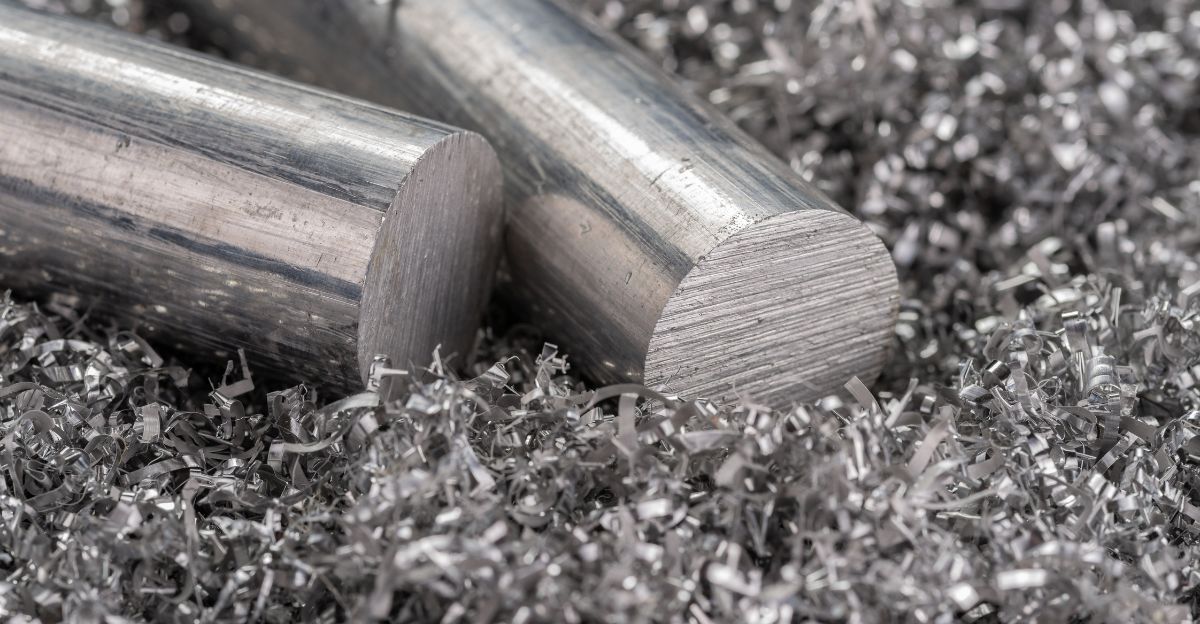
America’s car industry is facing one of its worst aluminum shortages in decades after a massive fire destroyed a significant part of the Novelis plant in Oswego, New York, on September 16, 2025.
This single factory was producing nearly half of all automotive aluminum used in the U.S.
The fire instantly created panic across the industry. Ford, the biggest customer from this plant and well-known for its F-150 pickup, is particularly at risk.
Production for Ford and other automakers is now in trouble, with experts warning the aluminum shortage could last until well into 2026.
Tariffs on imported aluminum make bringing in material from abroad very expensive, leaving manufacturers scrambling for any solutions to keep making cars and trucks.
Financial Catastrophe

The financial impact is massive. Ford could face an $800 million hit due to the shortage, which would be one of the most significant supplier disruptions the automotive industry has seen.
The timing is especially unfavorable, coinciding with companies’ busiest months.
After news broke, Ford’s stock dropped 7% in a single day, erasing billions in company value. One analyst estimates that a 20% drop in F-150 production could result in 46,000 fewer trucks, each worth $17,000 in profit for Ford.
This could force Ford to lower its profit targets for 2025, illustrating how quickly a single supply shock can disrupt an entire industry.
Strategic Gamble

Ford’s gamble on making the F-150 out of military-grade aluminum rather than traditional steel began in 2015.
While the move reduced the truck’s weight and improved fuel efficiency, it made Ford depend more heavily on specialized aluminum suppliers like Novelis.
As the lightweight F-150 became hugely profitable and popular, this success also locked Ford into a risky reliance on a single type of metal and a single supplier, now a significant problem as the Novelis plant sits idle.
Industry Dominance

The Oswego Novelis plant is a powerhouse, producing 350,000 metric tons of automotive aluminum each year and employing 1,100 people.
The factory supplied approximately 40% of the industry’s aluminum and supported not only Ford but also Toyota, Stellantis, Hyundai, and Volkswagen.
Its strategic location near Lake Ontario made it easy to get materials shipped in from Canada. That success turned into a single point of failure: now, everyone dependent on Novelis is struggling to adjust to the crisis.
Devastating Destruction

The fire that struck the plant destroyed its hot mill, the main production heart of the factory. More than 175 firefighters battled to get the blaze under control, with most of the work having to be done from ladders due to the collapsing roof.
The destruction was so severe that Novelis announced the entire facility would be offline until at least early 2026, the most extended shutdown in its history.
Thankfully, no one was hurt, but the physical and economic losses are enormous. Industry insiders call the factory a complete loss for now.
Regional Devastation

The loss of the Novelis plant is a massive blow to the local economy in Oswego County, New York. The factory’s $152 million annual economic impact is suddenly gone. Local businesses lose their biggest customer.
The 1,100 plant workers face an uncertain future, despite Novelis’s efforts to retain them and utilize overseas plants to fulfill some orders.
Leaders in the community worry people will leave Oswego if the plant’s repairs take too long, which could accelerate the decline of the area’s manufacturing jobs.
Human Impact

Ford workers across the country now face layoffs or reduced hours, as production lines slow or pause due to the lack of aluminum. Autofactories supplying Ford’s F-150, the bestselling vehicle in America, are especially nervous.
Customers waiting for new trucks are concerned about potential delays or are considering other brands.
Ford says it is working hard with Novelis and other suppliers to find solutions, but admits it cannot guarantee there won’t be significant disruptions.
Elsewhere in the supply chain, countless companies are bracing for job losses and reduced demand as the crisis spreads.
Competitive Scramble

Other major automakers, including Toyota, Stellantis, and Hyundai, are all working to find new aluminum sources quickly.
Toyota is managing with backups, Stellantis is focusing on supplier diversification, and Hyundai says it is not yet affected, but nobody feels completely safe.
Some automakers are even considering using less aluminum in new vehicles to stretch supplies further, but this involves significant changes and cannot solve the problem immediately.
The shortage has made everyone realize that relying heavily on a single supplier is a risky business strategy.
Trade War Complications

Attempts to import more aluminum are complicated by President Trump’s 50% tariffs on foreign metals. Tariffs that once protected U.S. jobs now make replacements much more expensive in a crisis.
Novelis is exploring ways to source aluminum from Europe, Brazil, and South Korea; however, high tariffs increase the cost for all parties involved.
Trade policies intended to support U.S. manufacturing are actually making it harder for automakers to overcome domestic disasters like this one.
Supply Chain Awakening

The Novelis fire highlights a larger problem. Over the years, the auto industry has adopted “just-in-time” production and deep cost-cutting, often relying on only one or two suppliers for parts or materials.
This strategy remains effective until a significant shock occurs, at which point the entire system is exposed.
As with past shortages of computer chips and rare metals, the fire highlights the risks associated with having no backup plan. Experts say the car industry may finally be ready for a major rethink: should efficiency or resilience be the priority in the future?
Internal Tensions

Inside Ford, executives, dealers, and shareholders are demanding immediate solutions. Each department has to balance cost, supply, and risk.
Ford insists that it is working with multiple suppliers but won’t share details about how much aluminum is really available.
Some insiders now question whether Ford’s high-stakes bet on aluminum was too risky, since it put so much of the F-150’s future in the hands of a single supplier.
These issues are set to become a significant topic when Ford releases its next financial results.
Strategic Reckoning

Ford may have no choice but to consider significant changes. Emergency talks are underway with smaller U.S. suppliers, even though they can only provide a fraction of what Ford needs.
Some leaders now suggest stockpiling aluminum to guard against future shocks, a significant shift from just-in-time manufacturing, but one that would incur billions in costs to implement.
There’s even talk about modifying the F-150 design to utilize less aluminum or alternative materials.
These are difficult decisions, but the fire proves that Ford must rethink what truly matters: short-term profit or long-term survival.
Recovery Attempts

Novelis states that it will rebuild as quickly as possible and aims to restore some capacity by the first quarter of 2026.
In the meantime, Novelis is relying on global facilities and partnerships to deliver emergency aluminum supplies to its major customers, such as Ford.
Ford is also exploring options, such as purchasing recycled aluminum or prioritizing its highest-margin models, to maximize the use of the limited supply.
But nothing can quickly replace the lost production at Oswego, so the impact on carmakers, dealers, and customers will last at least into next year.
Market Skepticism

Investors believe that this is not just a temporary blip. Analysts warn that Ford’s problems with aluminum could show other weaknesses in its supply chain.
Some doubt Ford’s ability to maintain top prices for F-150s if there are significant delays, and worry that buyers might switch to other brands.
These fears have hammered Ford’s stock price and left Wall Street wondering whether the company can weather this and bigger storms ahead, including the push for electric vehicles and the uncertain global trade landscape.
Future Questions

The Novelis disaster raises a significant question: Will automakers finally commit to diversifying their suppliers and building stronger supply chains, or will they wait until things return to normal?
As Ford and other companies move towards making more electric vehicles, the importance of backup plans and multi-sourcing will only grow.
Whether car companies learn from this crisis may decide who survives and thrives in a world of unpredictable shocks and new competitive threats.